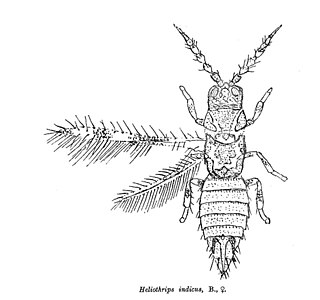
The Lumbricidae are a family of earthworms. About 33 lumbricid species have become naturalized around the world, but the bulk of the species are in the Holarctic region: from Canada and the United States and throughout Eurasia to Japan. An enigmatic species in Tasmania is Eophila eti. Currently, 670 valid species and subspecies in about 42 genera are recognized. This family includes the majority of earthworm species well known in Europe and Asia.

Oligochaeta is a subclass of soft-bodied animals in the phylum Annelida, which is made up of many types of aquatic and terrestrial worms, including all of the various earthworms. Specifically, oligochaetes comprise the terrestrial megadrile earthworms, and freshwater or semiterrestrial microdrile forms, including the tubificids, pot worms and ice worms (Enchytraeidae), blackworms (Lumbriculidae) and several interstitial marine worms.

Winter squash is an annual fruit representing several squash species within the genus Cucurbita. Late-growing, less symmetrical, odd-shaped, rough or warty varieties, small to medium in size, but with long-keeping qualities and hard rinds, are usually called winter squash. They differ from summer squash in that they are harvested and eaten in the mature stage when their seeds within have matured fully and their skin has hardened into a tough rind. At this stage, most varieties of this vegetable can be stored for use during the winter. Winter squash is generally cooked before being eaten, and the skin or rind is not usually eaten as it is with summer squash.

Aspidiotus is a genus of armoured scales in the family Diaspididae. There are more than 100 described species in Aspidiotus.

Axelrodichthys is an extinct genus of mawsoniid coelacanth from the Cretaceous of Africa, North and South America, and Europe. Several species are known, the remains of which were discovered in the Lower Cretaceous (Aptian-Albian) of Brazil, North Africa, and possibly Mexico, as well as in the Upper Cretaceous of Morocco (Cenomanian), Madagascar and France. The Axelrodichthys of the Lower Cretaceous frequented both brackish and coastal marine waters while the most recent species lived exclusively in fresh waters. The French specimens are the last known fresh water coelacanths. Most of the species of this genus reached 1 metre to 2 metres in length. Axelrodichthys was named in 1986 by John G. Maisey in honor of the American ichthyologist Herbert R. Axelrod.

Ischyrochampsa is an extinct monospecific genus of Late Cretaceous crocodyliform belonging to the eusuchian clade Allodaposuchidae. Fossils of the type species I. meridionalis are late Campanian in age and were found in the commune of Saint-Estève-Janson in Bouches-du-Rhône, France. Material is also known from Spain. It was named and described in 1995, and it had an estimated length of over 4 metres (13 ft).
Monopleura is a genus of saltwater clams, marine bivalve mollusks in the family Monopleuridae. These fossils have been dated back to the Cretaceous Period.

Melampsoraceae are a family of rust fungi in the order Pucciniales. The family is monotypic, containing the single genus Melampsora, which contains about 90 species.

Compsilura is a genus of flies in the family Tachinidae.

Aulacaspis, is a scale insect genus in the family Diaspididae. The type species is Aulacaspis rosae.
Trogloarctus trionyches is a species of tardigrade. It is the only species in the genus Trogloarctus, which is part of the family Coronarctidae. The species are found in the Mediterranean Sea. They were first found in 1996 in an underwater cave near La Ciotat in the Bouches-du-Rhône department, southern France.

Heliothrips is a genus of thrips in the family Thripidae. There are about 18 described species in Heliothrips.

Fuertesimalva is a genus of flowering plants in the mallow family Malvaceae, native to Mexico, Venezuela, Colombia, Ecuador, Bolivia, Peru and Argentina. Most species in this genus were originally placed in Urocarpidium.
Dendrobaena is a genus of annelids belonging to the family Lumbricidae.
Ailoscolex is a genus of annelids belonging to the family Hormogastridae.
Hemigastrodrilus is a genus of annelids belonging to the family Hormogastridae.
Hormogaster is a genus of annelids belonging to the family Hormogastridae.
Prosellodrilus is a genus of annelids belonging to the family Lumbricidae.
Carulaspis is a genus of true bugs belonging to the family Diaspididae.

Phytolacca rivinoides, also known by its common name Venezuelan pokeweed, is a species of shrub in the genus Phytolacca.










